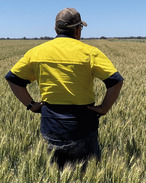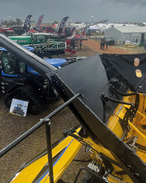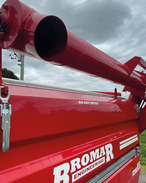There have been several reports to the Department of Primary Industries and Regional Development (DPIRD) PestFax service of RWA in the Esperance district, as well as Mount Madden, Lake King, and Mount Barker through to Borden and Williams.
Research scientist Svetlana Micic said DPIRD was undertaking surveillance for the pest throughout the grainbelt to monitor its spread and assist growers' preparations to protect crops.
Micic said RWA sightings to date had been in volunteer barley, barley and wheat crops.
"In most cases, aphids have been found around crop edges in fairly low numbers below action thresholds," Micic said.
"We've learnt in the past few years that this pest survives on a wide range of grasses and has a preference for barley grass.
"Crop monitoring by landholders and surveillance by the department will help us to determine the extent of spread of the pest in WA and what actions are required."
A research investment by the Grains Research and Development Corporation (GRDC) in the eastern states has found maximum aphid densities are expected to occur between a crop's booting and ear emergence stage and that populations can double every 35 days until ear emergence.
RWA has become established in grain growing regions across Australia, after it was first detected in South Australia in 2016.
"We now know that crop seedlings with heavy infestations can have their growth stunted with tillers lying almost parallel to the ground," Micic said.
"Later infestations of this pest can have a larger impact on yields as they can cause the flag leaf to curl, which can trap the awn and prevent the head from completely emerging and results in grain that does not mature properly."
RWA is manageable and there are a range of treatment options. An action threshold calculator available on the DPIRD website: https://www.agric.wa.gov.au/barley/russian-wheat-aphid-production-pest
"The action threshold for this pest depends on the cost of control, the cereal market price, the yield potential and estimated time until ear emergence," Micic said.
"To determine the number of aphids in a crop it is best to walk in a ‘w' pattern through the crop, noting the number of aphids per tiller every few paces.
"Consider surveying the paddock in more than one section and counting at least 100 tillers in each section.
Observations of RWA, including photographs, can be also be reported to the DPIRD PestFax Reporter app: https://www.agric.wa.gov.au/diseases/pestfax-reporter.
























